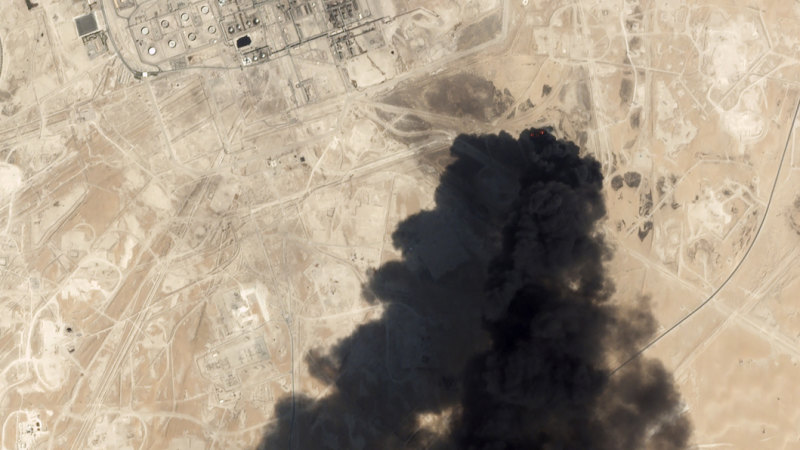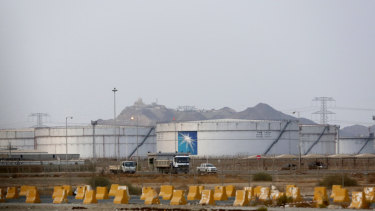For many of the national security teams that monitor threats on the US, the apparent drone strike on the heart of Saudi Arabia’s oil production facilities was the realisation of their worst fears.
Based on early reports, multiple relatively inexpensive drone devices were able to pierce Saudi defenses in a way that a traditional air force could not: flying long distances to drop potent bombs that apparently set vast portions of the Saudi petroleum infrastructure ablaze.
Storage tanks are seen at the North Jiddah bulk plant, an Aramco oil facility, in Jiddah, Saudi Arabia.Credit:AP
Quad copters
Price and others said they doubted that the small quad copters that have proliferated and can be bought online or in electronics stores were used in the Saudi attacks. Those battery-powered devices have limited range and can't carry more than a pound or so of explosives.
However, many nations, including Israel and Iran, have demonstrated the ability to build sophisticated flying devices that are relatively small and stealthy, while also capable of carrying powerful explosive devices.
A 2018 United Nations report found that Iran had helped the Houthis build a drone known as the Qasef-1, which was based on the Iranian-built Ababil-T.
In mid-2018, the Houthi forces developed a new, longer-range drone known as the UAV-X, according to another UN report earlier this year. It's capable of carrying a 40-pound (18-kilogram) warhead and flying more than 745 miles (1,200 kilometres).
Modern computer chips and global-positioning satellite tracking are making such drones more capable all the time, they said. And they are far cheaper to build than the multimillion-dollar Reaper drones used by the US military.
Price said he raises the subject of drone security at the seminars he regularly conducts at airports around the US, and the answer is always the same.
"I literally ask them, what are you doing about drones?" he said. "Everyone groans."
Bloomberg
Source: Read Full Article

